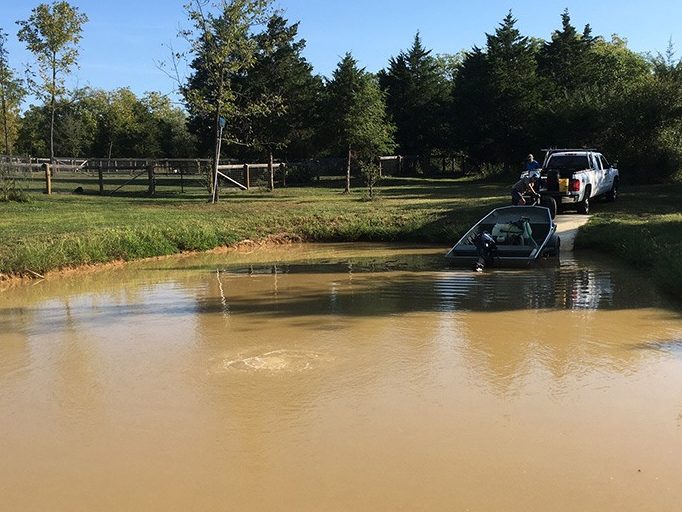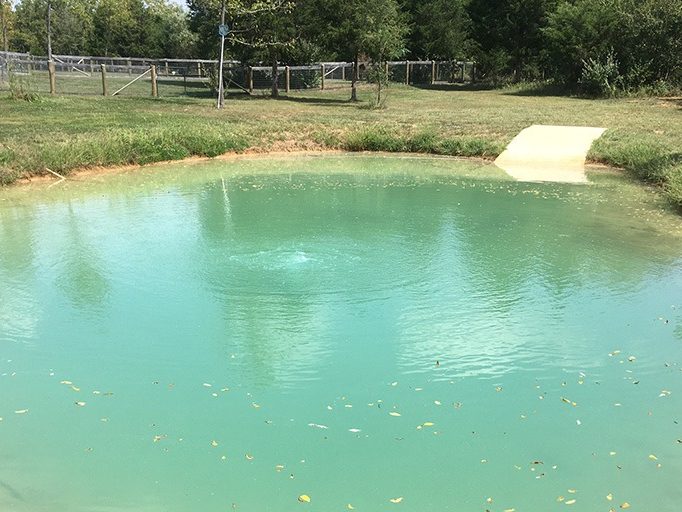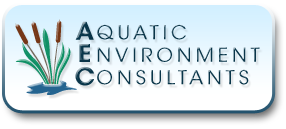

If your lake has become murky blue or green instead of clear and shimmery, like it used to be, you might have an algae problem. Algae is a growing concern plaguing many lake and pond owners — in fact, algae outbreaks increased by 18 percent between 2018 and 2019 alone. In this guide, we’ll discuss the causes of algae in ponds and lakes, as well as the hazards associated with algal blooms.
What Causes Algae in Lakes and Ponds?
There are several causes of algae in lakes and ponds, but the most common causes are pollution, light exposure levels, water movement, turbidity, and temperature. These common causes together can often result in large algae blooms and surface coverage of your pond and lake. It’s important to find the right lake and pond management to combat algae growth
Managing algal growth in water is complicated, in part, because there’s no definitive answer as to the cause of algae in ponds or lakes. Several factors come into play. Water nutrient levels, exposure to light, temperature, turbidity and the general conditions found in a body of water all contribute — and they’re all different from site to site. It’s important to stay ahead of the problem, however, since certain types of algae, like blue-green algae or cyanobacteria, can cause illness in humans and pets.

Is Algae Dangerous?
Not all algae are a hazard. Some algae — such as some types of plankton algae — play a vital role in the food chain and ecosystem of your pond or lake. However, some types of algae or algae-related conditions can pose a serious threat to you and all aquatic wildlife living in or near your body of water, such as:
- It creates dead zones: As algae blooms, it can deplete the water of its natural oxygen. This lack of oxygen can lead to a “dead zone,” or an area where aquatic plants and animals cannot survive.
- It is not safe to drink: Some lakes supply drinking water for millions of people. When high levels of toxic algae taint that water, it becomes much more expensive and challenging to treat the water before it is safe to use or consume. Even water deemed safe to consume may have an off-putting smell or aftertaste.
- It can be toxic: It’s important to stay ahead of any algae problem, especially since certain types of algae — like blue-green algae or cyanobacteria — can cause serious illness in humans and pets. Sicknesses such as these that are caused by algae are known as Harmful Algal Bloom (HAB) associated illnesses.
Common Causes of Algae in Lakes and Ponds
Algae growth can occur naturally through light exposure, water movement and warm pond temperatures, or as a result of human-made pollution. Often, algae growth is a side effect of several of these factors culminating at once:
1. Pollution
Given the slimy, sprawling appearance of certain types of algae and the way it often settles on the water’s surface, it’s easy to assume that algae is a byproduct of pollution. Algae plays a fundamental role in the health of any body of water, but problems arise when blooms grow out of control or the wrong types of algae begin to grow.
That isn’t to say that humans haven’t had an impact. The most prevalent algae on the planet today is blue-green algae, which feeds on a steady diet of phosphorus and nitrogen. While supplies of these nutrients are found in water naturally — especially in areas where the water has a low oxygen content — it’s also introduced through chemical runoff and erosion. Fertilizers and other products as well as poor sewage management have contributed to excess nutrients for many years. Practices and products are changing, but in most circumstances the damage has been done. Water bodies can have external sources of nutrients or with time they build up an internal supply of excess nutrients.
2. Light Exposure and Water Movement
Along with food, algae require the right amount of light to thrive. Blue-green algae are so common because they have the ability to move throughout the water column and adapt to variable conditions. Filamentous algae will typically grow around the shoreline of a pond or lake because this is where the shallower water is. You typically will not see filamentous algae growing in the middle of a 20 foot deep water body because that is too deep for the sunlight to penetrate.
3. Turbidity and Temperature
Turbidity is a measure of how clear or cloudy a body of water is. Swim in any natural body of water, and you’ll have trouble seeing below the surface because of the presence of tiny particles clouding your view. These particles usually come from suspended solids, such as clay and sediment from the bottom of the lake that shifts naturally during animal feeding or heavy rain. Solid particles can also be remnants of dissolved materials, like dirt and debris from runoff or animal waste. This turbidity impacts light exposure, and ultimately, the temperature of the water.
The more turbid the water, the warmer the water will be, allowing algae to grow quickly. As algae forms, the water becomes increasingly turbid, which fosters an even stronger environment for algal blooms to thrive.
AEC Lakes Can Help You With Your Algae Concerns
If you’re dealing with algae problems or attempting to prevent them, you may be facing a serious challenge without the help of an expert. What causes algae to grow in ponds and lakes is generally a combination of factors. Before you waste valuable time and money attempting to tackle algae on your own, talk with the experts at Aquatic Environment Consultants. We deliver results quickly with as little investment as possible.
For more than 30 years, we have worked with pond and lake owners to ensure the health and vitality of your water quickly and with as little investment as possible. We can help you figure out the source of your algae growth and devise a smart treatment and prevention plan to keep your pond or lake thriving for years to come.
